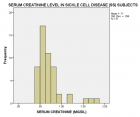Abstract
Review Article
A Comparative Analysis of Traditional Latent Fingerprint Visualization Methods and Innovative Silica Gel G Powder Approach
Bhoomi Aggarwal*
Published: 19 September, 2024 | Volume 8 - Issue 1 | Pages: 040-046
Latent fingerprints are a common source of information for forensic experts and law enforcement agencies. The thin layer chromatography (TLC) plates that are prepared in this work are made with silica gel G powder. Latent fingerprint remnants are made up of secretions from the nose, palm, and sebaceous, apocrine, and eccrine glands (sweat). However, the quest for more versatile and effective techniques persisted, leading to the emergence of innovative approaches like Silica Gel G powder. The silicon atoms are linked to –OH groups at the silica gel’s surface. A latent fingerprint is an imprint left by direct contact with a surface or object that is not apparent to the unaided eye. The advantages of using Silica Gel G powder for latent fingerprint visualization underscore its significance as an innovative technique in forensic science. The latent fingerprints were developed on each of the several substrates using Merck Specialties Private Limited’s white-coloured silica gel G powder. There are several techniques in the literature for creating latent fingerprints. The emergence of Silica Gel G powder in forensic science represents a significant breakthrough in the visualization of latent fingerprints. The process of using Silica Gel G powder for latent fingerprint visualization exemplifies the precision and attention to detail required in forensic investigations.
Read Full Article HTML DOI: 10.29328/journal.jfsr.1001063 Cite this Article Read Full Article PDF
Keywords:
Latent fingerprints; Silica gel G; Cyanoacrylate; Forensic science; Visualization technique
References
- Jura A. Latent fingerprints: methods, development techniques & analysis. Study.com. Available from: https://study.com/academy/lesson/latent-fingerprint-analysis-development-techniques.html
- Graham D. Some technical aspects of demonstration and visualization of fingerprints on human skin. J Forensic Sci. 1969;14(1):1-12. Available from: https://pubmed.ncbi.nlm.nih.gov/5767103/
- Bumbrah GS, Sharma RM, Jasuja OP. Emerging latent fingerprint technologies: a review. Research and Reports in Forensic Medical Science. 2016;6:39-50. Available from: https://www.dovepress.com/emerging-latent-fingerprint-technologies-a-review-peer-reviewed-fulltext-article-RRFMS#
- Joshi K, Kesharwani L. Latent fingerprints from non-porous surfaces submerged in water at different intervals of time using two SPR formulations. International Journal of Software & Hardware Research in Engineering. 2015;3(9):15-19. Available from: https://ijournals.in/wp-content/uploads/2017/07/4.3908-Kaneeka.compressed.pdf
- Loy DA. Silica gel – an overview. ScienceDirect Topics. Available from: https://www.sciencedirect.com/topics/materials-science/silica-gel
- Champod C, Lennard C, Margot P, Stoilovic M. Fingerprints and other ridge skin impressions. Boca Raton, London, New York, Washington, DC: CRC Press; 2004. Chapter 4. Available from: https://www.taylorfrancis.com/books/mono/10.1201/9780203485040/fingerprints-ridge-skin-impressions-christophe-champod-chris-lennard-milutin-stoilovic-pierre-margot
- Goode GC, Morris JR, Margot P, Stoilovic M. A review of their origin, composition, and methods of detection. Aldermaston: AWRE; 1983. Report No. O 22/83. Available from: https://aditya.ac.in/forensic-science/projects/Fingerprint%20&%20other%20Impressions/Shilpa_fingerprints%20on%20various%20surfaces.pdf
- Lee HC, Gaensslen RE. Advances in fingerprint technology. 2nd ed. Boca Raton, London, New York, Washington, DC: CRC Press; 2001. Chapter 3. Available from: https://www.taylorfrancis.com/books/mono/10.1201/9781420041347/advances-fingerprint-technology-robert-ramotowski-gaensslen-ashim-datta-henry-lee
- Singh K, Sharma S, Garg RK. Visualization of latent fingerprints using silica gel G: a new technique. Egyptian Journal of Forensic Sciences. 2012;3(1):20-25. Available from: https://www.sciencedirect.com/science/article/pii/S2090536X12000615
- Doibut T, Benchawattananon R. Small particle reagent based on natural dyes for developing latent fingerprints on non-porous wet surfaces. Management and Innovation Technology International Conference (MITicon). 2016.
- Champod C, Lennard C, Margot P, Stoilovic M. Fingerprints and other ridge skin impressions. 1st ed. CRC Press LLC; 2004. Available from: https://www.taylorfrancis.com/books/mono/10.1201/9780203485040/fingerprints-ridge-skin-impressions-christophe-champod-chris-lennard-milutin-stoilovic-pierre-margot
- Lee HC, Gaensslen RE. Advances in fingerprint technology. 2nd ed. CRC Press LLC; 2001. Available from: https://www.esalq.usp.br/lepse/imgs/conteudo_thumb/Advances-in-Fingerprint-Technology-2nd-ed.pdf
- Siegel JA, Knupfer GC, Saukko PJ. Encyclopedia of forensic sciences. 2nd ed. Academic Press; 2013.
- Theaker BJ, Hudson KE, Rowell FJ. Doped hydrophobic silica nano- and micro-particles as novel agents for developing latent fingerprints. Forensic Sci Int. 2008;174:26-34. Available from: https://doi.org/10.1016/j.forsciint.2007.02.030
- Sodhi GS, Kaur J. Fluorescent variant of silica nanoparticle powder synthesized from rice husk for latent fingerprint development. Egyptian Journal of Forensic Sciences. 2019. Available from: https://ejfs.springeropen.com/articles/10.1186/s41935-019-0155-1
- Yamashita B, French M, Bleay S, Cantu A, Inlow V, Ramotowski R, et al. Latent print development. In: Latent fingerprint examination: elements, human factors and recommendations. Nova Science Publishers Inc; 2014;225-320. Available from: https://researchprofiles.herts.ac.uk/en/publications/latent-print-development
- Sodhi GS, Kaur J. Powder method for detecting latent fingerprints: a review. Forensic Sci Int. 2001;120:172-6. Available from: https://doi.org/10.1016/s0379-0738(00)00465-5
- Singh K, Sharma S, Garg RK. Visualization of latent fingerprints using silica gel G: a new technique. Egyptian Journal of Forensic Sciences. 2013;3(1):20-25. Available from: https://doi.org/10.1016/j.ejfs.2012.09.001
- Thin layer chromatography. 2019. Available from: http://www.chemguide.co.uk/analysis/chromatography/thinlayer.html
- Mayo K. Evolution of fingerprint technology. Office of Justice Programs. Available from: https://www.ojp.gov/ncjrs/virtuallibrary/abstracts/evolution-fingerprint-technology
- Vadivel R, Nirmala M, Anbukumaran K. Commonly available, everyday materials as non-conventional powders for the visualization of latent fingerprints. Forensic Chemistry. 2021;24. Available from: https://www.sciencedirect.com/science/article/abs/pii/S2468170921000357
- Jasuja OP, Singh G. Development of latent fingermarks on thermal paper: preliminary investigation into the use of iodine fuming. Forensic Sci Int. 2009;192(1-3). Available from: https://doi.org/10.1016/j.forsciint.2009.08.005
- Bumbrah GS, Singh K, Sharma RM, Jasuja OP. Emerging latent fingerprint technologies: a review.2016;39-50 Available from: https://www.tandfonline.com/doi/full/10.2147/RRFMS.S94192
- Su B. Recent progress on fingerprint visualization and analysis by imaging ridge residue components. Analytical and Bioanalytical Chemistry. 2016; 408:2781-2791. Available from: https://link.springer.com/article/10.1007/s00216-015-9216-y
- Garg RK, Kumari H, Kaur R. A new technique for visualization of latent fingerprints on various surfaces using powder from turmeric: a rhizomatous herbaceous plant (Curcuma longa). Egypt J Forensic Sci. 2011;1(1):53-57. Available from: https://doi.org/10.1016/j.ejfs.2011.04.011
- Champod C, Lennard C, Margot P, Stoilovic M. Fingerprints and other ridge skin impressions. Boca Raton, London, New York, Washington, DC: CRC Press; 2004. Available from: https://doi.org/10.1201/9780203485040
- Nast HP, Fasold H. Rasche Fingerprint-Entwicklung auf Kieselgel-Dünnschichtplatten [Fingerprint development on silica gel thin layer plates]. J Chromatogr. 1967;27(2):499-501. German. Available from: https://doi.org/10.1016/s0021-9673(01)85912-4
- Kumari H, Kaur R, Garg RK. New visualizing agents for latent fingerprints: synthetic food and festival colors. Egyptian Journal of Forensic Sciences. 2011;1(3-4):133-139. Available from: https://www.sciencedirect.com/science/article/pii/S2090536X11000372
- Maltoni D, Maio D, Jain AK, Prabhakar S. Handbook of fingerprint recognition. 2nd ed. New York: Springer-Verlag; 2009.
- Nigam K, Das T, Harshey A, Kumar A, Kapoor N, et al. Effectiveness of talcum powder for decipherment of latent fingerprints on various substrates. Asian Journal of Chemistry. 2020;33(1):120-6. Available from: https://asianpubs.org/index.php/ajchem/article/view/33_1_21
- Rohatgi R, Sodhi GS, Kapoor A. Small particle reagent based on crystal violet dye for developing latent fingerprints on non-porous wet surfaces. Egyptian Journal of Forensic Sciences. 2015;5(4):162-5. Available from: https://core.ac.uk/reader/82639730
- Bridges BC. Practical fingerprinting. New York: Funk & Wagnalls Publishing Company; 1963;250-3. Available from: https://www.amazon.com/Practical-Finger-Printing-B-C-Bridges/dp/B000ZFLBDU
- Sodhi GS, Kaur J. Powder method for detecting latent fingerprints: a review. Forensic Science International. 2001;120(3):172-176. Available from: https://www.sciencedirect.com/science/article/pii/S0379073800004655
- Goode GC, Morris JR. Latent fingerprints: a review of their origin, composition, and methods of detection. Tech. AWRE Report No. 022/83. Atomic Weapons Research Establishment, Aldermaston, UK; 1983. Available from: https://search.worldcat.org/title/Latent-fingerprints-:-a-review-of-their-origin-composition-and-methods-for-detection/oclc/12859927
- Valdes-Ramirez D, et al. A review of fingerprint feature representations and their applications for latent fingerprint identification: trends and evaluation. IEEE Access. 2019;7:48484-99. Available from: https://typeset.io/pdf/a-review-of-fingerprint-feature-representations-and-their-32f06hf100.pdf
- Ezhilmaran D, Adhiyaman M. A review study on latent fingerprint recognition techniques. Journal of Information and Optimization Sciences. 2017;38(3-4):501-16. Available from: http://dx.doi.org/10.1080/02522667.2016.1224468
- Sodhi GS, Kaur J. Fluorescent small particle reagent. Part 1: a novel composition for detecting latent fingerprints on wet non-porous items. Fingerprint World. 2010;26(4):150-3. Available from: http://dx.doi.org/10.1016/j.ejfs.2012.04.004
- Sodhi GS, Kaur J. Novel, cost-effective organic fingerprint powder based on phloxine B dye. Def Sci J. 2000;50(2):213-5.
- Rajan R, Zakaria Y, Shamsuddin S, Hassan NFN. Fluorescent variant of silica nanoparticle powder synthesized from rice husk for latent fingerprint development. Egyptian Journal of Forensic Sciences. 2019;9:50. Available from: https://ejfs.springeropen.com/articles/10.1186/s41935-019-0155-1
- Kumari H, Kaur R, Garg RK. New visualizing agents for latent fingerprints: synthetic food and festival colors. Egyptian Journal of Forensic Sciences. 2011;1(3-4):133-9. Available from: https://doi.org/10.1016/j.ejfs.2011.07.006
- Dhunna A, Anand S, Aggarwal A, Agarwal A, Verma P, Singh U. New visualization agents to reveal the hidden secrets of latent fingerprints. Egyptian Journal of Forensic Sciences. 2018;8:32. Available from: https://ejfs.springeropen.com/articles/10.1186/s41935-018-0063-9
- Gabay Almog J. Chemical reagents for the development of latent fingerprints. III. Visualization of latent fingerprints by fluorescent reagents in vapor phase. J Forensic Sci. 1980;25(2):408-10. Available from: https://pubmed.ncbi.nlm.nih.gov/7391800/
- Azman AR, Mahat NA, Wahab RA, Wan AZ, Mohamad AAH, Hafezul HH, et al. Relevant visualization technologies for latent fingerprints on wet objects and its challenges: a review. Egyptian Journal of Forensic Sciences. 2019;9:1-13. Available from: https://doi.org/10.1186/s41935-019-0129-3
- Sodhi GS, Kaur J. Multimetal deposition method for detection of latent fingerprints: a review. Egyptian Journal of Forensic Sciences. 2017;7:1-7. Available from: https://ejfs.springeropen.com/articles/10.1186/s41935-017-0017-7
- Wang M, Li M, Yu A, Zhu Y, Yang M, Mao C. Fluorescent nanomaterials for the development of latent fingerprints in forensic sciences. Advanced Functional Materials. 2017;27(14):1606243. Available from: https://doi.org/10.1002/adfm.201606243
- Singh K, Sharma S. A new method for visualization of latent fingerprints on various colored surfaces using silica gel-G powder. ResearchGate. Available from: https://www.researchgate.net/publication/257737219_Visualization_of_latent_fingerprints_using_silica_gel_G_A_new_technique/fulltext/026f949d0cf2052f189081c9/Visualization-of-latent-fingerprints-using-silica-gel-G-A-new-technique.pdf
- Vadivel R, Nirmala M. Visualization of latent fingerprints using neutral alumina as an inexpensive fingerprint developing powder. ResearchGate. 2012 Available from: https://www.researchgate.net/publication/344478568_visualization_of_latent_fingerprints_using_neutral_alumina_as_an_inexpensive_fingerprint_developing_powder.
- Michalski S, Shaler R, Dorman FL. The evaluation of fatty acid ratios in latent fingermarks by gas chromatography/mass spectrometry (GC/MS) analysis. J Forensic Sci. 2013;58(s1). Available from: https://doi.org/10.1111/1556-4029.12010
- Lee PLT, et al. Functionalised silicon oxide nanoparticles for fingermark detection. Forensic Science International. 2015.
- Dhunna A, Anand S, Aggarwal A, Agarwal A, Verma P, Singh U. New visualization agents to reveal the hidden secrets of latent fingerprints. Egyptian Journal of Forensic Sciences. 2018. Available from: https://ejfs.springeropen.com/articles/10.1186/s41935-018-0063-9.
- Azman AR, Mahat NA, Abdul Wahab R, Ahmad WA, Mohamed Huri MA, Hamzah HH. Relevant visualization technologies for latent fingerprints on wet objects and its challenges: a review. Egyptian Journal of Forensic Sciences. 2019. Available from: https://ejfs.springeropen.com/articles/10.1186/s41935-019-0129-3
- Verma A, Nisha, Banerjee T, Sodhi GS. Development of latent fingerprints on non-porous surfaces with fluorescent dye-based small particle reagent. International Journal of Scientific Research in Science and Technology. 2021;443-7. Available from: https://doi.org/10.32628/ijsrst218394
- Sodhi GS, Nigam D, Monica, Ritu, Kaur S, Kaur J. Fluorescent small particle reagent. Part 2: Detection of latent fingerprints on compact disks. Fingerprint World. 2010;26(4):154-8.
- Bin S. Recent progress on fingerprint visualization and analysis by imaging ridge residue components. Analytical and Bioanalytical Chemistry. 2016; 408(11):2781-91. Available from: https://pubmed.ncbi.nlm.nih.gov/26781104/
- Taylor J, Blenkin M. Uniqueness in the forensic identification sciences—fact or fiction? Forensic Science International. 2011;206(1-3):12-18. Available from: https://www.sciencedirect.com/science/article/abs/pii/S0379073810003920
- Malhotra R, et al. Recent advancements in the visualization of latent fingerprints.
- Bhagat D. Recent trends of dyes in latent fingerprint development. 2020;1:23-4. ResearchGate. Available from: https://www.researchgate.net/publication/351301689_Recent_Trends_of_Dyes_in_Latent_Fingerprint_Development
- Jasuja OP, Toofany MA, Singh G, Sodhi GS. Dynamics of latent fingerprints: the effect of physical factors on quality of ninhydrin developed prints—a preliminary study. Sci Justice. 2009 Mar;49(1):8-11. Available from: https://doi.org/10.1016/j.scijus.2008.08.001
- Prabakaran E, Pillay K. A novel approach of fluorescent porous graphite carbon nitride based silica gel powder for latent fingerprint detection. Applied Nanoscience. 2018;9: 255–277. Available from: https://link.springer.com/article/10.1007/s13204-018-0904-8
- Kerr FM, Haque F, Barson IW. Organic based powders for latent fingerprint detection on smooth surfaces. Part I. Can Soc Forensic Sci Int. 1983;16:39-44. Available from: https://www.semanticscholar.org/paper/%E2%80%9COrganic-Based-Powders-for-Fingerprint-Detection-on-Kerr-Haque/e644bdab9055b956a6ba17227bee98c993d3a230
- Sodhi GS, Kaur J, Garg RK. A fingerprint powder formulation based on rhodamine B. J Forensic Ident. 2003;53(5):551-5. Available from: https://www.researchgate.net/publication/279540274_A_fingerprint_powder_formulation_based_on_Rhodamine_B_dye
- Divya V, Agrawal B, Srivastav A, Bhatt P, Bhowmik S, Yadvendra Agrawal K, et al. Fluorescent amphiphilic silica nanopowder for developing latent fingerprints. Australian Journal of Forensic Sciences. 2018;52(3):354-67. Available from: https://doi.org/10.1080/00450618.2018.1533036
- Çetli E, Özkoçak V, Tatar D. The role of silica nanoparticle in fingerprint visualization studies. Aksaray University Journal of Science and Engineering. 2022;6(1):27-41. Available from: https://doi.org/10.29002/asujse.1035557
- Bumbrah GS. Cyanoacrylate fuming method for detection of latent fingermarks: a review. Egyptian Journal of Forensic Sciences. 2017;7(4). Available from: https://ejfs.springeropen.com/articles/10.1186/s41935-017-0009-7
Figures:
Similar Articles
-
Sensitivity and Intertextile variance of amylase paper for saliva detectionAlexander Lotozynski*. Sensitivity and Intertextile variance of amylase paper for saliva detection. . 2020 doi: 10.29328/journal.jfsr.1001017; 4: 001-003
-
Awareness level on the relevance of forensics in criminal investigation in NigeriaOmorogbe Owen Stephen,Orhue Osazee Kelvin,Ehikhamenor Edeaghe,Nwawuba Stanley Udogadi*. Awareness level on the relevance of forensics in criminal investigation in Nigeria. . 2021 doi: 10.29328/journal.jfsr.1001028; 5: 053-057
-
Extraction of DNA from face mask recovered from a kidnapping sceneBassey Nsor*,Inuwa HM. Extraction of DNA from face mask recovered from a kidnapping scene. . 2022 doi: 10.29328/journal.jfsr.1001029; 6: 001-005
-
Unconventional powder method is a useful technique to determine the latent fingerprint impressionsHarshita Niranjan,Shweta Rai,Kapil Raikwar,Chanchal Kamle,Rakesh Mia*. Unconventional powder method is a useful technique to determine the latent fingerprint impressions. . 2022 doi: 10.29328/journal.jfsr.1001035; 6: 045-048
-
Alcohol drinking and driving habit particularly in Nigeria and the role forensic science could playMaurice E Nwakobi*. Alcohol drinking and driving habit particularly in Nigeria and the role forensic science could play. . 2022 doi: 10.29328/journal.jfsr.1001038; 6: 068-076
-
Bioinformatics as a modern tool in forensic science for data understanding & investigation in researchPranav Kumar Ray*. Bioinformatics as a modern tool in forensic science for data understanding & investigation in research. . 2022 doi: 10.29328/journal.jfsr.1001040; 6: 083-087
-
Requirement for object-oriented database management systems in forensic scienceGesine Rempp A,Volkmar Vill*. Requirement for object-oriented database management systems in forensic science. . 2023 doi: 10.29328/journal.jfsr.1001042; 7: 001-003
-
Development of qualitative GC MS method for simultaneous identification of PM-CCM a modified illicit drugs preparation and its modern-day application in drug-facilitated crimesBhagat Singh*,Satish R Nailkar,Chetansen A Bhadkambekar,Suneel Prajapati,Sukhminder Kaur. Development of qualitative GC MS method for simultaneous identification of PM-CCM a modified illicit drugs preparation and its modern-day application in drug-facilitated crimes. . 2023 doi: 10.29328/journal.jfsr.1001043; 7: 004-010
-
Review of the Efficiency of Ten Different Commercial Kits for Extracting DNA from Soil Mixed Biological SamplesNeha Mundotiya*, Mukesh Choudhary, Saurabh Jaiswal, Umema Ahmad. Review of the Efficiency of Ten Different Commercial Kits for Extracting DNA from Soil Mixed Biological Samples. . 2023 doi: 10.29328/journal.jfsr.1001045; 7: 017-024
-
Variation in Genuine Handwriting While Writing on an Unusual SurfaceNisha Potle, Sakshi Hemant Chavan, Yash Hari Kekane, Snehal Umesh Tembhurne, Nitin Pandey*, Yash Ranjeet dalvi. Variation in Genuine Handwriting While Writing on an Unusual Surface. . 2023 doi: 10.29328/journal.jfsr.1001046; 7: 025-033
Recently Viewed
-
A Low-cost High-throughput Targeted Sequencing for the Accurate Detection of Respiratory Tract PathogenChangyan Ju, Chengbosen Zhou, Zhezhi Deng, Jingwei Gao, Weizhao Jiang, Hanbing Zeng, Haiwei Huang, Yongxiang Duan, David X Deng*. A Low-cost High-throughput Targeted Sequencing for the Accurate Detection of Respiratory Tract Pathogen. Int J Clin Virol. 2024: doi: 10.29328/journal.ijcv.1001056; 8: 001-007
-
A Comparative Study of Metoprolol and Amlodipine on Mortality, Disability and Complication in Acute StrokeJayantee Kalita*,Dhiraj Kumar,Nagendra B Gutti,Sandeep K Gupta,Anadi Mishra,Vivek Singh. A Comparative Study of Metoprolol and Amlodipine on Mortality, Disability and Complication in Acute Stroke. J Neurosci Neurol Disord. 2025: doi: 10.29328/journal.jnnd.1001108; 9: 039-045
-
Development of qualitative GC MS method for simultaneous identification of PM-CCM a modified illicit drugs preparation and its modern-day application in drug-facilitated crimesBhagat Singh*,Satish R Nailkar,Chetansen A Bhadkambekar,Suneel Prajapati,Sukhminder Kaur. Development of qualitative GC MS method for simultaneous identification of PM-CCM a modified illicit drugs preparation and its modern-day application in drug-facilitated crimes. J Forensic Sci Res. 2023: doi: 10.29328/journal.jfsr.1001043; 7: 004-010
-
A Gateway to Metal Resistance: Bacterial Response to Heavy Metal Toxicity in the Biological EnvironmentLoai Aljerf*,Nuha AlMasri. A Gateway to Metal Resistance: Bacterial Response to Heavy Metal Toxicity in the Biological Environment. Ann Adv Chem. 2018: doi: 10.29328/journal.aac.1001012; 2: 032-044
-
Obesity in Patients with Chronic Obstructive Pulmonary Disease as a Separate Clinical PhenotypeDaria A Prokonich*, Tatiana V Saprina, Ekaterina B Bukreeva. Obesity in Patients with Chronic Obstructive Pulmonary Disease as a Separate Clinical Phenotype. J Pulmonol Respir Res. 2024: doi: 10.29328/journal.jprr.1001060; 8: 053-055
Most Viewed
-
Evaluation of Biostimulants Based on Recovered Protein Hydrolysates from Animal By-products as Plant Growth EnhancersH Pérez-Aguilar*, M Lacruz-Asaro, F Arán-Ais. Evaluation of Biostimulants Based on Recovered Protein Hydrolysates from Animal By-products as Plant Growth Enhancers. J Plant Sci Phytopathol. 2023 doi: 10.29328/journal.jpsp.1001104; 7: 042-047
-
Sinonasal Myxoma Extending into the Orbit in a 4-Year Old: A Case PresentationJulian A Purrinos*, Ramzi Younis. Sinonasal Myxoma Extending into the Orbit in a 4-Year Old: A Case Presentation. Arch Case Rep. 2024 doi: 10.29328/journal.acr.1001099; 8: 075-077
-
Feasibility study of magnetic sensing for detecting single-neuron action potentialsDenis Tonini,Kai Wu,Renata Saha,Jian-Ping Wang*. Feasibility study of magnetic sensing for detecting single-neuron action potentials. Ann Biomed Sci Eng. 2022 doi: 10.29328/journal.abse.1001018; 6: 019-029
-
Pediatric Dysgerminoma: Unveiling a Rare Ovarian TumorFaten Limaiem*, Khalil Saffar, Ahmed Halouani. Pediatric Dysgerminoma: Unveiling a Rare Ovarian Tumor. Arch Case Rep. 2024 doi: 10.29328/journal.acr.1001087; 8: 010-013
-
Physical activity can change the physiological and psychological circumstances during COVID-19 pandemic: A narrative reviewKhashayar Maroufi*. Physical activity can change the physiological and psychological circumstances during COVID-19 pandemic: A narrative review. J Sports Med Ther. 2021 doi: 10.29328/journal.jsmt.1001051; 6: 001-007

HSPI: We're glad you're here. Please click "create a new Query" if you are a new visitor to our website and need further information from us.
If you are already a member of our network and need to keep track of any developments regarding a question you have already submitted, click "take me to my Query."















































































































































